Another iconic picture from the Vietnam War.
You might not know her name, but you’ve probably seen a photo of Kim Phuc – She is well-known as the terrified young girl in an iconic photo from the Vietnam War.
The terrified girl had ripped off her burning clothes while fleeing. The children from left to right are: Phan Thanh Tam, younger brother of Kim Phuc, who lost an eye, Phan Thanh Phouc, youngest brother of Kim Phuc, Kim Phuc, and Kim’s cousins Ho Van Bon, and Ho Thi Ting. Behind them are soldiers of the ARVN 25th Division. (AP Photo/Nick Ut)
By chance, you might have read a report or a story on American main stream media over the years that asserted that Kim Phuc, the little nine year old Vietnamese girl running naked from the napalm strike near Trang Bang on 8 June 1972, was burned by Americans bombing Trang Bang. The picture communicated the horrors of the Vietnam War in a way words never could, helping to end one of the most divisive wars in American history and later becoming a symbol of the cruelty of all wars for children and civilian victims. This picture was one of the reasons the US lost as the whole world sees it.
And so the perception continued…
Unfortunately the public never realized that no American had involvement in this incident near Trang Bang that burned Phan Thi Kim Phuc. The planes doing the bombing near the village were VNAF ( South Vietnam Air Force) and were being flown by Vietnamese pilots in support of ARVN troops on the ground.
The Vietnamese pilot who dropped the napalm in error is currently living in the United States. Even the AP photographer, Nick Ut, who took the picture was Vietnamese. Most American soldiers had already left the country by then, the Paris Peace Accords were signed several months later.
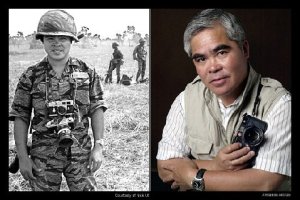
AP photographer, Nick Ut
Here are the front pages of some newspapers when the picture and story published the following day:
This event was witnessed and reported by UPI television correspondent Christopher Wain, and also reported at the time, by noted correspondent Peter Arnett. Other journalists who were not there, through assumption, sloppy work, or malice, have since reported that the attack was by US aircraft, and have further embellished the story with time.
The facts behind the picture:
The incident in the photo took place on the second day of a three day battle between the North Vietnamese Army (NVA) who occupied the village of Trang Bang and the ARVN (Army of the Republic of Vietnam) who were trying to force the NVA out of the village.
Thumbnails of the film footage showing the events just before and after the iconic photograph was taken.
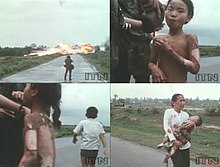
Less publicized is film shot by British television cameraman Alan Downes for the British ITN news service and his Vietnamese counterpart Le Phuc Dinh who was working for the American station NBC, which shows the events just before and after the photograph was taken. In the top-left frame, a man (possibly Nick Út) stands and appears to take photographs as a passing airplane drops bombs. A group of children, Kim Phúc among them, run away in fear. After a few seconds, she encounters the reporters dressed in military fatigues, including Christopher Wain who gave her water (top-right frame) and poured some over her burns. As she turns sideways, the severity of the burns on her arm and back can be seen (bottom-left frame). A crying woman runs in the opposite direction holding her badly burned child (bottom-right frame). Sections of the film shot were included in Hearts and Minds, the 1974 Academy Award-winning documentary about the Vietnam War directed by Peter Davis.
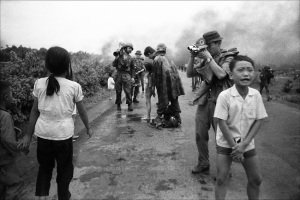
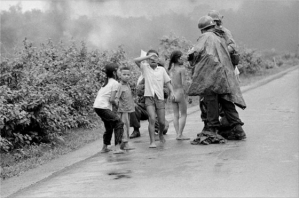
Journalists pour water over the burns of 9 year old Pham Thi Kim Phuc (center)
After snapping the photograph, Ut took Kim Phúc and the other injured children to Barsky Hospital in Saigon, where it was determined that her burns were so severe that she probably would not survive. Kim remained hospitalized for 14 months, and underwent 17 surgical procedures, including skin transplantation, before she recovered from the burns. Grateful for the care she had received she later decided to study medicine but struggled to come to terms with her deep physical and psychological scars.
Kim Phúc and mother at the hospital
Ut continued to visit Kim Phúc until he was evacuated during the fall of Saigon.
Life afterwards…
As a young adult, while studying medicine, Phúc was removed from her university and used as a propaganda symbol by the communist government of Vietnam. In 1986, however, she was granted permission to continue her studies in Cuba. She had converted from her family’s Cao Đài religion to Christianity four years earlier. Phạm Văn Đồng, the then-Prime Minister of Vietnam, became her friend and patron. After arriving in Cuba, she met Bui Huy Toan, another Vietnamese student and her future fiancé. In 1992, Phúc and Toan married and went on their honeymoon in Moscow. During a refueling stop in Gander, Newfoundland, they left the plane and asked for political asylum in Canada, which was granted. The couple now live in Ajax, Ontario near Toronto, and have two children. In 1996, Phúc met the surgeons who had saved her life. The following year, she passed the Canadian Citizenship Test with a perfect score and became a Canadian citizen.
- The first was that, despite suffering extensive third degree burns to her left arm, back and side, the soles of her feet were not burnt and she could run.
- The second was that after she collapsed and lost consciousness the photographer, Nick Ut, took her to Barsky Hospital in Saigon.
- The third was that her own mother found her there later that day whilst searching for her children.

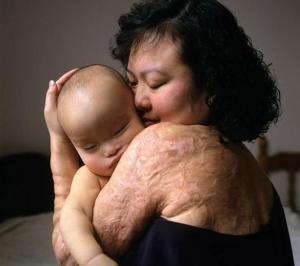
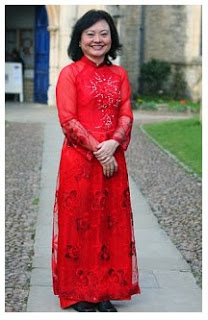
Goodwill Ambassador for Peace.
On November 10, 1994, Kim Phúc was named a UNESCO Goodwill Ambassador. In 1997 she established the first Kim Phúc Foundation in the US, with the aim of providing medical and psychological assistance to child victims of war. Later, other foundations were set up, with the same name, under an umbrella organization, Kim Phúc Foundation International.
She has dedicated her life to promoting peace and providing medical and psychological support to help children who are victims of war in Uganda, East Timor, Romania, Tajikistan, Kenya, Ghana and Afghanistan.
Kim Phuc, now 52, lives near Toronto, Canada, with her husband and two children, Thomas and Stephen.

The Girl in the Picture: The Kim Phúc Story, the Photograph and the Vietnam War by Denise Chong is a 1999 biographical and historical work tracing the life story of Kim Phúc. Chong’s historical coverage emphasizes the life, especially the school and family life, of Kim Phúc from before the attack, through convalescence, and into the present time.
The Girl in the Picture deals primarily with Vietnamese and American relationships during the Vietnam War, while examining themes of war, racism, immigration, political turmoil, repression, poverty, and international relationships through the lens of family and particularly through the eyes and everyday lives of women. Kim Phúc and her mother, Nu, provide the lens through which readers of The Girl in the Picture experience war, strife, and the development of communism in Vietnam. Like Chong’s first book, The Girl in the Picture was shortlisted for the Governor General’s Literary Award for non fiction.
Audio tapes of President Richard Nixon, in conversation with his chief of staff, H. R. Haldeman in 1972, reveal that Nixon mused “I’m wondering if that was fixed” after seeing the photograph. After the release of this tape, Út commented, “Even though it has become one of the most memorable images of the twentieth century, President Nixon once doubted the authenticity of my photograph when he saw it in the papers on 12 June 1972…. The picture for me and unquestionably for many others could not have been more real. The photo was as authentic as the Vietnam War itself. The horror of the Vietnam War recorded by me did not have to be fixed. That terrified little girl is still alive today and has become an eloquent testimony to the authenticity of that photo. That moment thirty years ago will be one Kim Phúc and I will never forget. It has ultimately changed both our lives.”
Author’s note: No single photograph turned public opinion against the war in Vietnam; no single image “expedited” its end. The war’s confusing aims and uncertain policy objectives, its duration, and its toll in dead and wounded all were far more decisive to its outcome.
For additional articles about Kim Phúc and this “famous” photo, click the links below:
http://www.cnn.com/2015/06/22/world/kim-phuc-where-is-she-now/ – CNN special June 25, 2015
http://www.kimfoundation.com/modules/contentpage/index.php?file=story.htm – more info about Kim’s foundation
http://www.warbirdforum.com/vphoto.htm – responding to the myth.
<><><>
Thank you for taking the time to read this. Should you have a question or comment about this article, then scroll down to the comment section below to leave your response.
If you want to learn more about the Vietnam War and its Warriors, then subscribe to this blog and get notified by email or your feed reader every time a new story, picture, video or changes occur on this website – the button is located at the top right of this page.
I’ve also created a poll to help identify my website audience – before leaving, can you please click HERE and choose the one item best describing you. Thank you in advance!

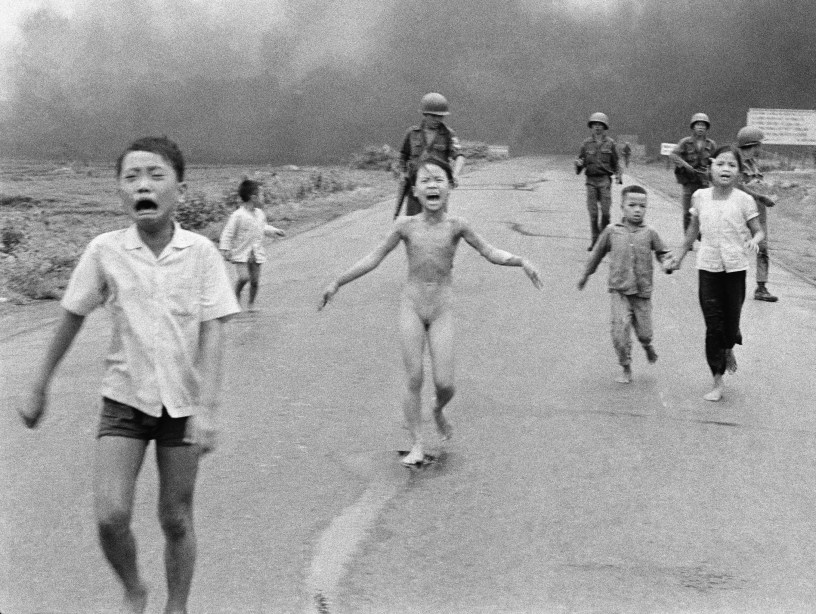


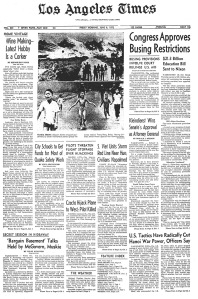
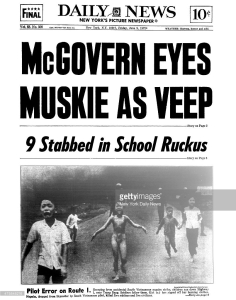
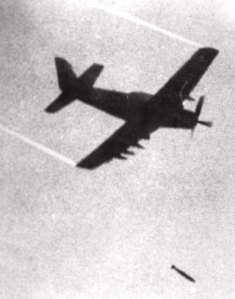
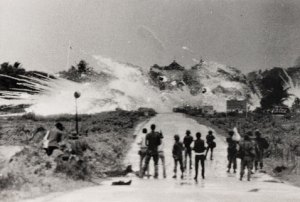
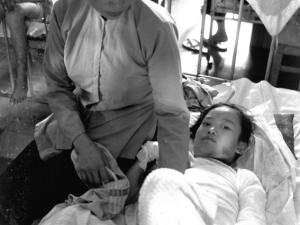
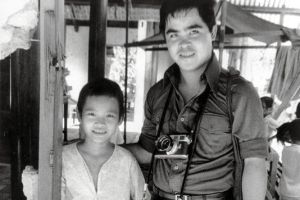


I had a misunderstanding about that picture as well. John it’s good you are able to clear up all the misinformation.
Thanks for all you do to educate us all.
LikeLike
Johnson used Vietnam to promote the destruction of the US Constitution. We could have win this war in 90 days. The loss on both sides are on Johnson’s soul.
LikeLike
Hi, JP,
After reading this, I can only say I am very happy about the young girl Kim Phuc that got a hold of her life, after enduring such pain. It is sad that the US took the blame. That was not right but in war things happen that no one can explain.
Shalom shalom
LikeLike
This is copied and pasted from Wikipedia… Don’t act like the South Vietnamese forces weren’t a US installed puppet regime.
LikeLiked by 1 person
Why make a clumsy attempt to shift blame from the US ? Do you really think that people are that stupid ?
LikeLike
Sorry John, but it is what it is. ARVN’s dropped the napalm without US involvement.
On Thu, Oct 4, 2018 at 10:52 AM CherriesWriter – Vietnam War website wrote:
>
LikeLike
I ask my brother, a former SF veteran about that and he told me it was the SV that did the bombing. My thoughts: the US got blamed for everything when so many good men died in doing what they thought was right.
LikeLike
IT SURE MAKES YOU THINK ABOUT HOW BAD IT WAS OVER THERE AND THANK THE LORD SHE MADE IT OUT ALIVE BUT HAS LOTS OF SCARS INSIDE AND ON THE OUT SIDE PRAYERS FOR HER.
LikeLiked by 1 person
Thank you for the confirmation Brother! Take care in your travels!
LikeLike
When I went back to Nam in 08, 10, 12 & 14, I always went to Trang Bang and ate at the restaurant right next to the soccer field on the left side of the road in the Vil of Trang Bang. I was always told by the Agents that were assigned to us that it was the S. Vietnamese Air Force that did the bombing run. Some of her family still lives right across Hwy I from the and confirmed this. Makes me wonder now. You can visit the shrine they have in her family / relatives that live there and talk to them. They told me the SV AF did it also. The soccer field was there in 66 and still used today. The cemetery next to it was converted in to a children’s play ground a couple years ago. My 1st 2 trips the cemetery was there but never kept up and over grown. I have photos of both. I will be going back in 16 but not to that area, this trip Central Highlands, Cambodia & Burma for a month… I always thought we did the run but they say it was the SVN A F that did it. I took several photos in there… Butch Petit > WordPress.com > pdoggbiker posted: ” Another iconic picture from the Vietnam War. You > might not know her name, but you’ve probably seen a photo of Kim Phuc > – She is well-known as the terrified young girl in an iconic photo > from the Vietnam War. The terrified girl had ripped off her” >
LikeLiked by 2 people